Blog
The intersection of sustainability and landscape design
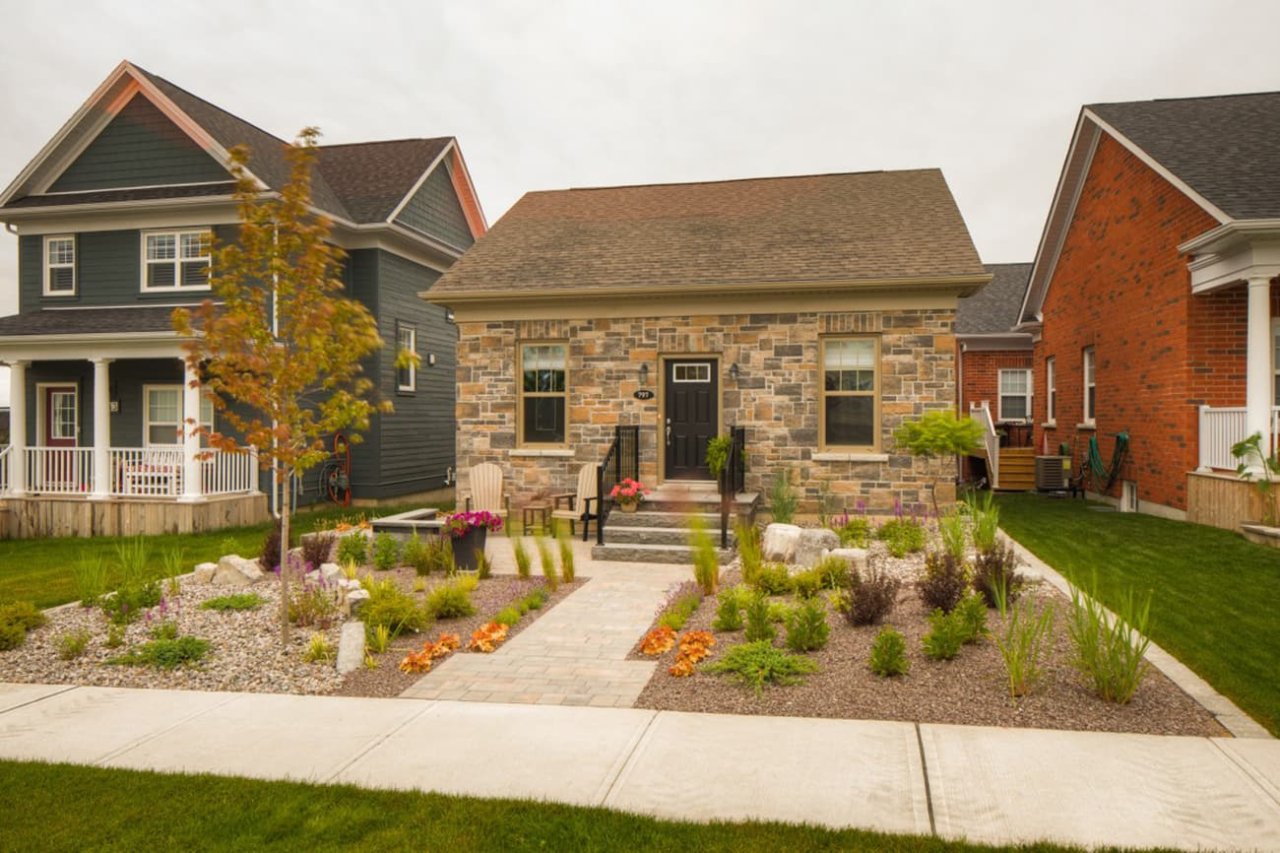
Most landscapes are natural but are they sustainable? You might be asking yourself: why should I prioritize sustainability over aesthetic? The good news is you can have both! The intersection of sustainability and landscape design is the process of creating a landscape that is both attractive and in balance with the natural environment, while requiring/ using less resources. Not only do sustainable landscapes benefit the environment, they also benefit you, here are some benefits of a sustainable landscapes:
- Saves you money and resources
- Low maintenance
- Long lasting
- Attracts wildlife such as butterflies, birds, bees etc.
- Visually pleasing
When designing a sustainable landscape there are a couple of factors to consider:
1. How can your landscape design support biodiversity and the local ecology?
2. How can you conserve resources with your landscape design?
Supporting biodiversity through landscaping:
The word biodiversity comes from the term biological-diversity, which means the rich and enormous variety of life on earth, including plants, bacteria, animals and fungi. All of these living organisms are part of a robust and delicate system and are crucial to the success of all life on earth. Without a large range of living organisms our ecosystem would not survive and let's be honest, how great would a landscape be without the beauty of nature? Sometimes the best and most enjoyable elements of our outdoor spaces come from the nature and biodiversity surrounding it, such as listening to the beautiful tune from song birds as you read a book on the porch or watching the butterflies and bees bouncing around your garden. Fortunately, there are ways we can help support biodiversity with the choices we make with our plants and landscape design. When designing a sustainable landscape these are some of the elements that should be considered:
Incorporating native and pollinator friendly plants in your gardens:
Incorporating pollinator friendly Plants:
We understand that not everyone is a fan of bugs and the idea of incorporating plants that will attract them is daunting. Understanding their purpose allows us to see their beauty and reject the notion that bugs are an imposition to our comfort. Pollinating species play a key role in the survival of our ecosystem. The decline of bees and other pollinating insects is an alarming reality. Pollination is an essential process for plant reproductive cycles, 80% of plant species across the world depend on pollination and without it most plants would not survive, creating a negative domino effect in our ecosystem. For example native bees and the famous monarch butterfly are now on the endangered species list and are at risk of becoming extinct. A single bee can pollinate up to 5,000 plants in ONE day, they don’t call them busy bees for nothing. On top of being beneficial for our pollinators, some pollinator friendly plants provide some of the most beautiful blooms in the world! Such as the Purple Coneflower, Sunflowers, Stonecrop, Goldenrod, Bee Balm the list goes on! For more click here.
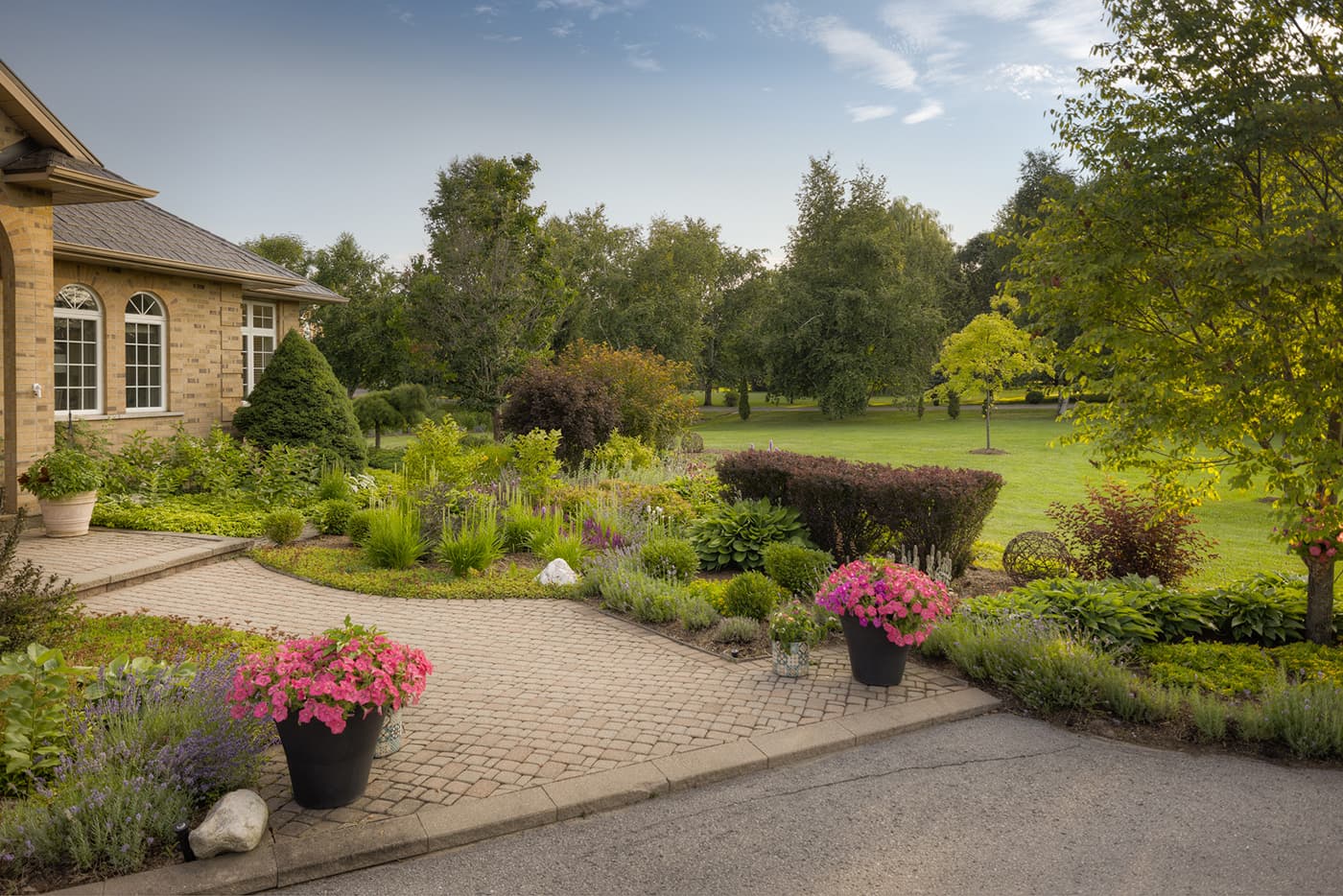 This client was interested in attracting more butterflies to his garden, so by carefully selecting the proper pollinating plants to include in their landscape design we were able to produce a bee, butterfly and hummingbird oasis! While also providing visual appeal for our clients' enjoyment.
This client was interested in attracting more butterflies to his garden, so by carefully selecting the proper pollinating plants to include in their landscape design we were able to produce a bee, butterfly and hummingbird oasis! While also providing visual appeal for our clients' enjoyment.
Incorporating pollinator plants is one of the easiest ways to amplify the life and beauty in your landscape, and to create an eco-friendly and sustainable garden, especially if the plants are native. This brings us to our next point:
Incorporating native plants in your garden:
Ontario is home to a large variety of beautiful native plants, in fact environment Canada states that Canada hosts up to 17,000 different tree, flora, fern and moss species. That's a lot of plants! In our line of work we really like to emphasize the importance of using native species over non native species. Native species have survived for thousands of years and are well adapted to the local climate making them hardy and susceptible to unpredictable weather conditions such as droughts, cold and heat. Furthermore, they also have many environmental benefits such as:
Increases biodiversity and provides a habitat for birds & beneficial insects
Pollinator friendly and provides food for local birds
Improves soil, air and water quality which supports the ecosystem
Low maintenance and requires less resources to keep alive.
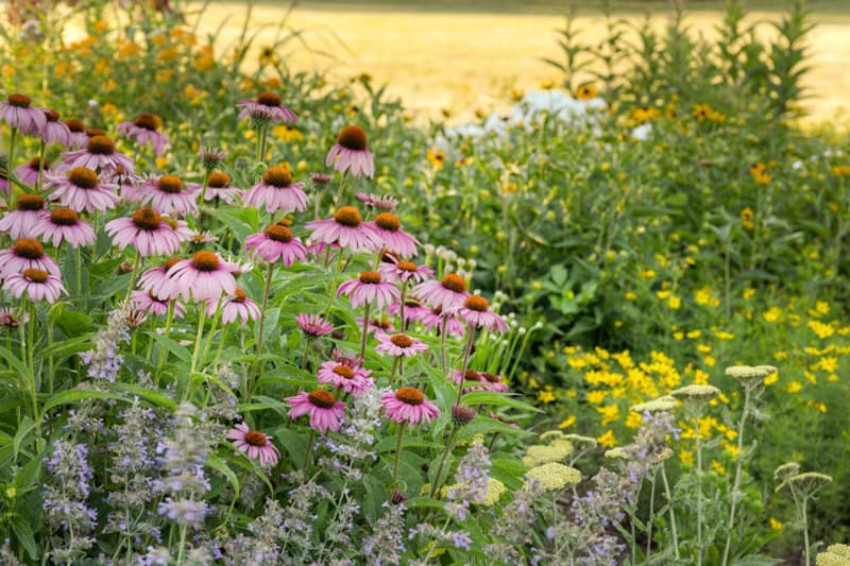
Incorporating native trees:
Native vs non-native trees…are they equal when it comes to sustainability? Although we are a sucker for a beautiful Japanese Maple tree, the answer is unfortunately no. Native trees have existed in our area for thousands of years which means they are well adapted and thrive in our local climate, requiring less water and care. Native trees also support the environment that we live in, for example ONE native cherry tree can host up to 448 different species of moths and butterflies and that's not including other species such as birds. Compared to a non-native tree that only hosts a small handful of insect and bird species. When you put this into perspective, think of your favourite walking trails, provincial parks or even the public parks your kids like to play at, without native trees those naturalized areas would lack abundant life, including birds, butterflies, squirrels, etc.
Carbon capture and Oxygen production with trees:
Trees also play a crucial role in improving the quality of the air we breathe. Through photosynthesis their leaves pull in carbon dioxide and water through tiny pores, called stomata, and use energy absorbed from the sun to turn the CO2 and H2O into sugars. During that process, the tree releases O2 (oxygen). An acre of trees produces enough breathing oxygen for 18 people every day. In addition to playing a key role in environmental stability, when trees (especially native trees) are incorporated into a landscape design they can add height and visual interest to an empty property. They can function as solar and wind barriers contributing to a more effective microclimate. They are the epitome of a landscape feature with beauty and function.
Conserving resources with landscape design:
Conserving resources through landscaping is a win-win for homeowners and the environment. Not only can you save money, you can also conserve valuable resources such as water, and energy through thoughtful landscaping.
Water Management:
Most conventional landscapes require a large quantity of water to keep alive and thriving, this can cost homeowners a substantial amount of money (especially if you have irrigation). The unfortunate reality is, water is the most valuable resource in the world and often gets wasted or over used in our society. For example, next time there is a heavy rainfall, observe where all that fresh water is going. In most cases this free resource gets wasted by getting redirected towards storm drains which can affect the quality of natural waterways. Additionally, think about how much water our gardens and turf requires during a dry period in the summer. These realities can be hard to hear but rest assured through thoughtful landscaping and simple drainage solutions you can converse water and minimize run-off, such as:
- Incorporating permeable surfaces/paving in your landscape design to prevent water run-off and flooding.
- Using rain barrels for stormwater capture and reuse on your gardens and turf grass. Automated irrigation systems can pull from rain barrels too!
- Incorporate mulch or compost in your garden to help retain moisture, limiting water usage.
- Incorporating Xeriscape Gardens / native plants in your landscape (these incorporate plants that are drought tolerant and require less water)
- Limit turf area or use turf alternatives such as clover.
- Incorporate a rain garden or trees with deep root systems to prevent run-off and flooding.
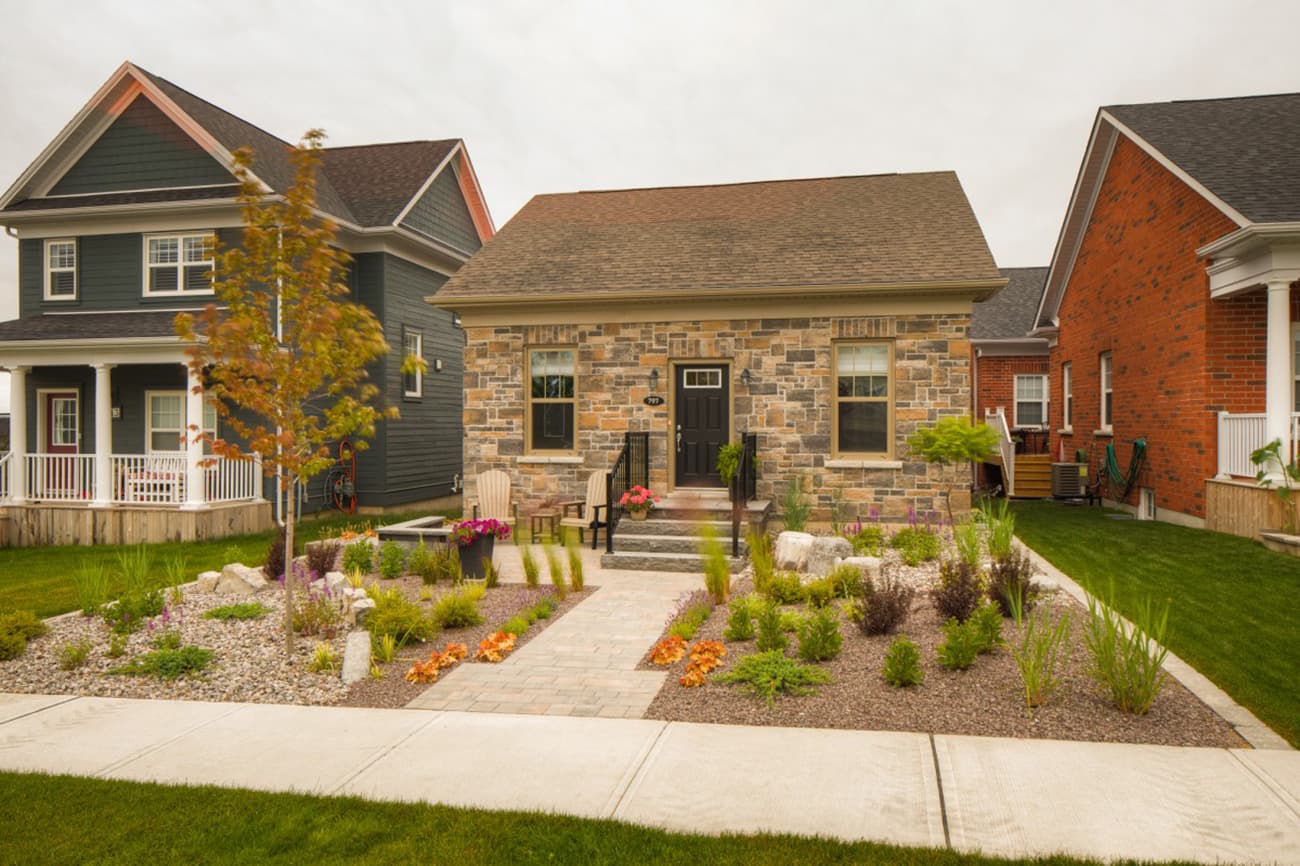 Another great way to conserve water is to opt for a lawn alternative such as this client who transformed the front of their property into a xeriscape garden! Including perennials, shrubs and grasses that are drought tolerant and require less water. So, not only does this property have outstanding curb appeal it is also eco friendly! This photo was taken the year this property landscape was installed. As it ages, you will see less base material and much more plant life and greenery.
Another great way to conserve water is to opt for a lawn alternative such as this client who transformed the front of their property into a xeriscape garden! Including perennials, shrubs and grasses that are drought tolerant and require less water. So, not only does this property have outstanding curb appeal it is also eco friendly! This photo was taken the year this property landscape was installed. As it ages, you will see less base material and much more plant life and greenery.
Managing your properties microclimate with landscaping to conserve energy:
A microclimate is the weather or climate conditions in the immediate area where your home is located. The main influencing factors of your properties microclimate is: wind speed, solar radiation, air temperature and humidity. Your home might experience more or less sun, shade, wind, rain, snow, moisture, or dryness than average local conditions, but what does your microclimate have to do with a sustainable landscape? For starters, according to Toronto Hydro, the single most energy-inefficient and expensive household appliance to run is a central air conditioner. Electric heaters also consume quite a bit of energy also. Conserving energy is a great way to reduce your carbon footprint, and it will save you money on heating and cooling bills. That is why during the initial stages of design it is important to understand the microclimate of your property. Understanding where your home receives the most direct sunlight, what direction the winds come from, soil type, annual rainfall, etc. will guide you in what landscape design might be best suited for your property. For example, if you are located on the edge of a great lake you probably experience higher winds and windchill, resulting in using more energy to heat your home. Or, let's say your home is located in an open suburban area with little to no sun protection, surrounded by other homes/buildings, asphalt roads, and minimal green space, thus absorbing heat (a phenomenon known as the Heat Island Effect). As a result, you have to rely heavily on your AC to keep your house cool.
Both examples cost a substantial amount of energy and $$$ in the long run. That’s why it’s so important to design a landscape that can help manage your properties microclimate in a natural way such as,
- Mitigating windchill by incorporating non deciduous trees, hedges and berms in your landscape that act as windbreaks for your home, year-round.
- Mitigating heat by strategically placing broadleaf trees with a thick canopy near your house to limit direct sunlight on your house.
- Controlling solar reflectivity with thoughtful consideration of hardscaping materials
- Managing snow drifts with deciduous trees, native grasses and shrubs
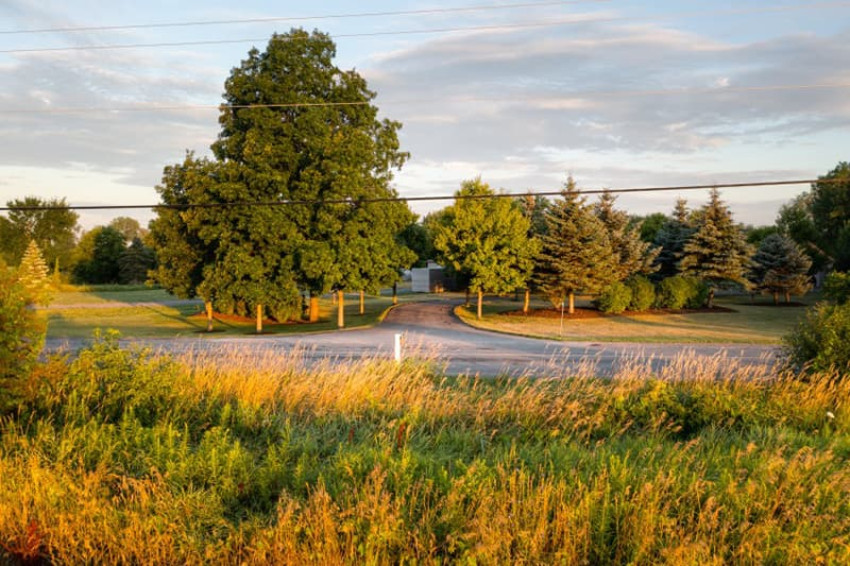
The takeaway:
Although a sustainable landscape may sometimes require more planning and education it is important to remember that you don’t have to sacrifice visual appeal or function for sustainable/eco-friendly options, you CAN have both. That’s why involving landscape professionals is so important during these processes, we have the knowledge and experience to provide you with a landscape that will go above and beyond for you, your wallet and the environment.
For more information, the links below provide a more detailed breakdown of the following sustainability topics:
1. Conserving Energy with Landscaping
2. Is Grass Good for the Environment?
3. A Visualization of Biodiversity
sources:
Posted: February 6th, 2023
View More Posts